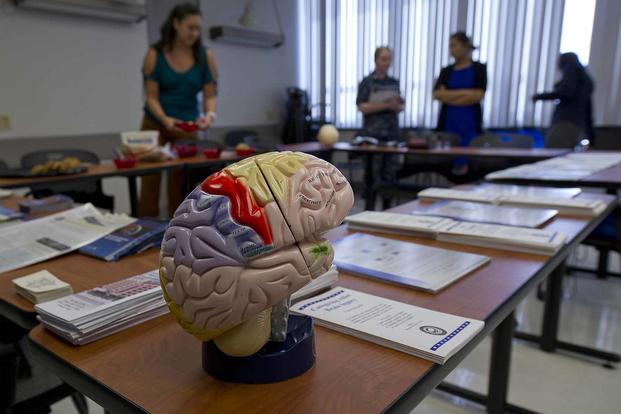Brain damage found post-mortem in some NFL players and professional athletes appears to be less prevalent in U.S. service members, including those with traumatic brain injury or blast wave exposure, new research has found.
An investigation of 225 veterans' brains found just 10 -- or 4.4% -- had chronic traumatic encephalopathy, or CTE, a degenerative disease linked to brain injury, including multiple concussions, according to the study, to be published Thursday in the prestigious New England Journal of Medicine.
By contrast, an examination of 202 brains of U.S. football players detected CTE in 87% of the samples. That included 21% of high school players, 91% of those who played through college and 99% of the NFL players represented in the samples.
Given that many of the symptoms associated with CTE -- including cognitive issues, mood disorders, substance abuse, behavioral changes and suicide -- are often reported by combat veterans who suffered a traumatic brain injury, either by hitting their heads or exposure to blasts, researchers were looking to find out just how common the condition was among former service members.
They examined the brains of veterans who donated their bodies to the Department of Defense-Uniformed Services University Brain Tissue Repository and found the condition was relatively rare. Among the 10 with CTE, half had evidence of it in just one part of their brain.
The researchers cautioned, though, that the small number of cases prevented them from drawing any "definitive conclusions with regard to associations or causality of blast exposure and CTE."
"Evidence of CTE was infrequently found in a series of brains from military personnel and was usually reflected by minimal neuropathologic changes ... but the small number of CTE cases and wide confidence intervals preclude causal conclusions," wrote the researchers, led by Dr. David Priemer, assistant professor of pathology at the Uniformed Services University of the Health Sciences.
The research is significant, however, in that it contributes to the body of knowledge regarding the prevalence of the disease in military veterans.
The most famous case of CTE is likely that of Aaron Hernandez, the New England Patriots tight end who died by suicide in 2017 after being imprisoned for a murder he committed in 2013. Boston University researcher Ann McKee determined that the 27-year-old suffered from advanced CTE.
The disease also was the subject of the film "Concussion," starring Will Smith as Dr. Bennet Omalu, a forensic pathologist who published a case study in 2002 about a Pittsburgh Steeler with CTE.
For their study, the DoD researchers examined tissue slides of the veterans' brains, looking for buildup of an abnormal protein thought to cause CTE.
Of the 10 veterans determined to have CTE, all had played competitive sports, with half having played football and the others playing vigorous sports such as soccer, wrestling and skateboarding.
Nearly all had been in a motor vehicle accident or other mishap off duty, with loss of consciousness; five were diagnosed with depression and/or PTSD, and four died by suicide.
Eight ranged in age between 31 and 59; the two others were 72 and 87, and both had been diagnosed with Alzheimer's disease before their deaths.
The average age of the 225 veterans in the study was 48 years.
Six were Navy veterans, including two SEALS; two were Marines; and the rest served in the Army and Air Force.
The authors noted that their research had its limitations, including that, in many cases, the veterans' TBI may not have been documented in medical records and was reported by their family members, which could cause inconsistencies in the data.
They added that the brains were donated by family members, possibly leading to "acquisition bias," since families who contribute to research often do so because their loved ones had traumatic brain injury or displayed behavioral or psychiatric symptoms.
-- Patricia Kime can be reached at Patricia.Kime@Military.com. Follow her on Twitter @patriciakime.
Related: Traumatic Brain Injury Classifications Are Leading to Preventable Deaths, Report Says












